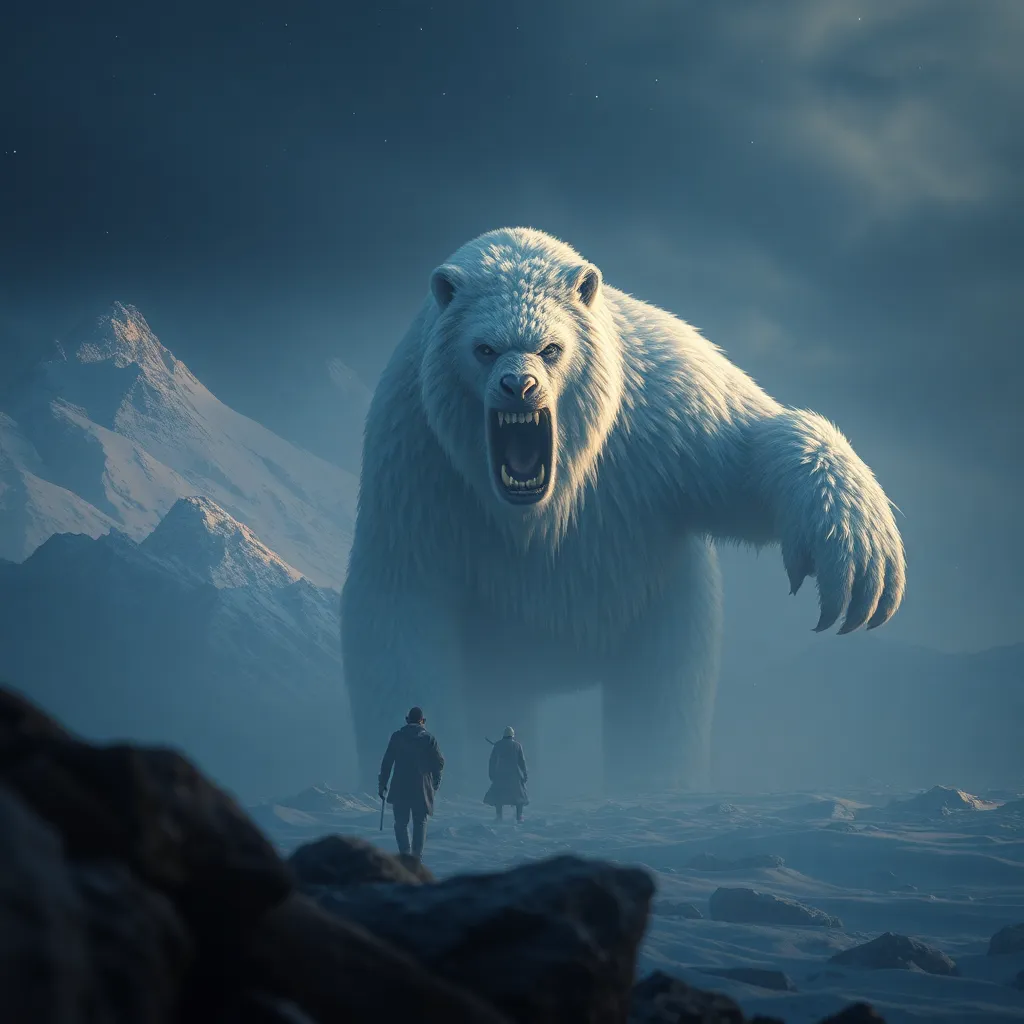The Yeti: A Source of Inspiration for Storytelling? Examining the Myth’s Influence on Modern Narratives
I. Introduction
The Yeti, often referred to as the “Abominable Snowman,” is a legendary creature said to inhabit the snowy regions of the Himalayas. This enigmatic being has captured the imaginations of many, not only for its supposed physical presence but also for its deep cultural significance in the folklore of indigenous peoples in the region. As a symbol of mystery and adventure, the Yeti serves as a wellspring of inspiration for storytelling across various mediums.
This article aims to explore the historical origins of the Yeti myth, its representation in literature and film, and its symbolism in contemporary narratives. By examining the Yeti’s influence on modern pop culture and storytelling trends, we will uncover the enduring appeal of this legendary creature and its role in shaping narratives that resonate with audiences today.
II. Historical Origins of the Yeti Myth
The Yeti has its roots deeply embedded in Himalayan folklore. Indigenous cultures, including the Sherpa and other local communities, have long recounted tales of a large, hairy creature roaming the mountains. These stories often highlight the Yeti as both a protector and a threat, embodying the duality of nature itself.
A. The Yeti in Himalayan Folklore and Indigenous Cultures
In the traditional beliefs of the Sherpa people, the Yeti is often regarded as a spiritual being that inhabits the remote and sacred areas of the mountains. Its presence is intertwined with the cultural practices and spiritual beliefs of the region, where it is seen as a guardian of the wilderness.
B. Early Accounts and Sightings of the Yeti
Western interest in the Yeti began in the 19th century when explorers and mountaineers reported sightings of a mysterious creature. Notable figures, such as Sir Edmund Hillary and Tenzing Norgay, who first summited Mount Everest, contributed to the lore with their accounts. These early sightings were often fueled by misinterpretations of animal tracks and local folklore.
C. Evolution of the Myth Over Time
As the Yeti myth spread beyond the Himalayas, it evolved into various interpretations. By the mid-20th century, the Yeti became a popular subject in Western media, transforming from a local folklore figure into a global icon of mystery.
III. The Yeti in Literature and Film
The Yeti’s allure has made it a popular subject in various literary works and films. Its portrayal often reflects societal fears and fascinations with the unknown.
A. Analysis of Prominent Literary Works Featuring the Yeti
- The Abominable Snowman of Pasadena by Joan Lowery Nixon: A children’s book that introduces young readers to the Yeti myth through adventure.
- Yeti: The Ecology of a Myth by Dr. John D. Harder: A comprehensive examination of the Yeti in relation to ecology and environmental themes.
B. The Yeti’s Portrayal in Film and Television
Films like “The Abominable Snowman” (1957) and animated features such as “Smallfoot” (2018) illustrate the Yeti as both a fearsome creature and a misunderstood being. These narratives often explore themes of friendship, understanding, and the challenges of coexisting with nature.
C. How These Narratives Shape Public Perception of the Myth
The representations of the Yeti in media have significantly shaped public perception, often oscillating between the creature being a terrifying monster and a benign, whimsical figure. This duality reflects humanity’s complex relationship with the natural world.
IV. Symbolism of the Yeti in Storytelling
The Yeti serves as a potent symbol in storytelling, representing various themes that resonate deeply with human experiences.
A. The Yeti as a Representation of Nature and the Unknown
The Yeti embodies the mystery of the natural world, symbolizing the unexplored territories of both geography and the human psyche. It invites audiences to confront their fears and curiosities about the unknown.
B. Exploration of Themes Such as Isolation and Adventure
Many narratives featuring the Yeti delve into themes of isolation, as the creature is often depicted in remote, harsh environments. This setting fosters a sense of adventure, challenging characters to navigate their fears and discover resilience.
C. The Yeti as a Metaphor for the Search for Identity
In some stories, the Yeti represents the quest for self-discovery. Characters may embark on journeys into the mountains, mirroring their internal struggles with identity and belonging.
V. Influence of the Yeti on Modern Pop Culture
The Yeti’s impact extends into various aspects of modern pop culture, influencing everything from video games to merchandise.
A. The Yeti in Video Games and Comic Books
- Video Games: Titles like “Tomb Raider” feature the Yeti as an adversary, adding a layer of excitement and challenge.
- Comic Books: Characters inspired by the Yeti often appear in superhero narratives, emphasizing their strength and mystery.
B. Merchandise and Branding Inspired by the Yeti Myth
The Yeti has become a symbol for various brands, from outdoor gear to novelty items, capitalizing on its association with adventure and the wild.
C. The Yeti in Social Media and Viral Content
In the age of social media, the Yeti is frequently featured in memes and viral content, further embedding it within contemporary culture and making it accessible to younger audiences.
VI. Comparative Analysis with Other Cryptids
When examining the Yeti, it is essential to compare it with other legendary creatures such as Bigfoot and the Loch Ness Monster. These cryptids share similarities and differences that highlight the diverse ways myths can shape narratives.
A. Similarities and Differences Between the Yeti and Other Legendary Creatures
- Bigfoot: Both creatures are depicted as elusive and mysterious, representing the unknown aspects of nature.
- Loch Ness Monster: While the Yeti is associated with snowy mountains, the Loch Ness Monster is tied to water, demonstrating how different environments give rise to distinct myths.
B. How These Cryptids Inspire Similar Narratives and Themes
All three cryptids evoke themes of mystery, exploration, and the supernatural, serving as metaphors for humanity’s relationship with nature and the unknown.
VII. The Yeti’s Impact on Contemporary Storytelling Trends
The resurgence of interest in mythical creatures, including the Yeti, reflects broader trends in storytelling that resonate with contemporary audiences.
A. The Resurgence of Interest in Mythical Creatures in Modern Narratives
In recent years, there has been a notable increase in narratives featuring mythical creatures. The Yeti, as a symbol of mystery and adventure, captures the imagination of creators and audiences alike.
B. The Role of the Yeti in Environmental Storytelling and Conservation Themes
Stories centered around the Yeti often highlight environmental themes, emphasizing the importance of preserving natural habitats and fostering a connection with the wilderness.
C. How the Myth Fosters Creativity and Innovation in Storytelling
The Yeti myth encourages storytellers to explore innovative narratives that blend adventure with moral and philosophical questions, inspiring new generations of writers and creators.
VIII. Conclusion
The Yeti remains a significant figure in storytelling, symbolizing the allure of the unknown and the complexities of human experience. Its enduring appeal lies in its ability to resonate across cultures and generations, serving as a catalyst for creativity and exploration in narratives.
As we continue to explore the rich tapestry of folklore and its impact on contemporary storytelling, the Yeti stands out as a compelling subject that invites further investigation into the myths that shape our understanding of the world.



